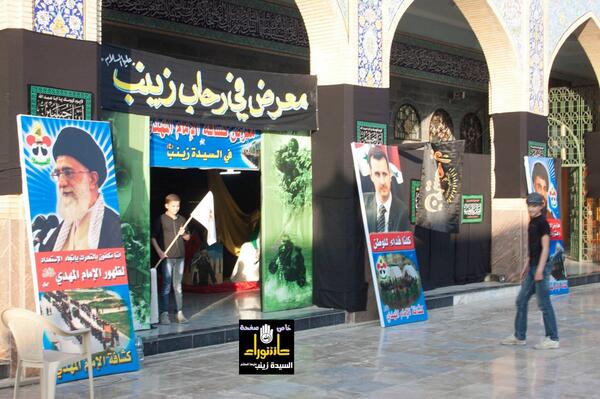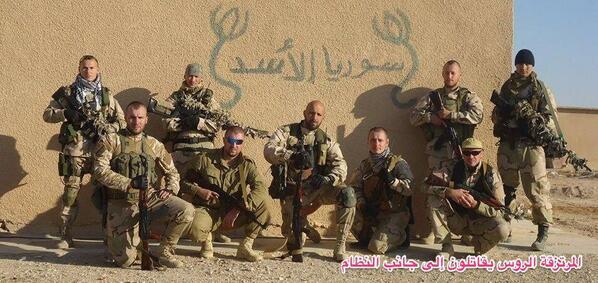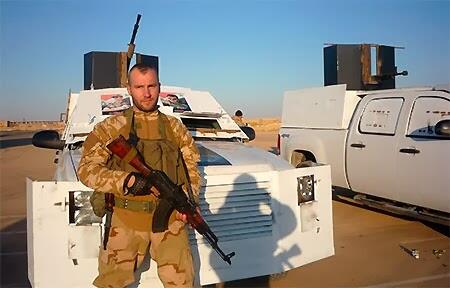- Beranda
- Komunitas
- News
- Berita Luar Negeri
Ribuan milisi Syi'ah Iraq, Lebanon, Afghanistan serta tentara Russia memasuki Suriah
TS
Earth.Index
Ribuan milisi Syi'ah Iraq, Lebanon, Afghanistan serta tentara Russia memasuki Suriah
Lawmakers got a detailed briefing on the dizzying array of forces fighting on the Syrian battlefield at a hearing today before the House subcommittee on terrorism. The hearing showcased the work of three scholars who closely follow the militant groups fighting on both sides of the Syrian civil war.
And while much attention is paid to the Sunni Muslim jihadists who've seized the rebel mantle, complicating and often halting Western attempts to support the opposition's cause, the House hearing included an in-depth analysis of the Iranian-sponsored militias that are fighting on behalf of President Bashar Assad.
We've examined the Sunni extremist insurgency in several stories, such as this and this. But we've had less access to information on the Shiite militias backing up the regime, so here are some excerpts from testimony about the other side of the "foreign fighter" label. These remarks come from Phillip Smyth, a Middle East research analyst at the University of Maryland who's a dogged chronicler of the Shiite militant presence in Syria.
Smyth testified:
Tehran’s main regional proxies which believe in, promote, and project Iran’s “Islamic Revolutionary” ideology are the main contributors of Shi’a fighters to Syria. The proxy groups sending combatants include Lebanese Hizballah, Iraq’s Asa’ib Ahl al-Haq, the Badr Organization, Kata’ib Hizballah, and other smaller splinters from Iraqi Shi’a radical leader, Muqtada al-Sadr.
Announcing its existence in May, Kata’ib Sayyid al-Shuhada, another Iraq-based Iranian-proxy organization, claims to have sent 500 fighters to Syria. Starting in mid-October, Asa’ib Ahl al-Haq publicly called for Iraqi Shi’a volunteers to join the organization’s fight in Syria. For months prior there had been have also been reports of trained volunteer fighters who had joined Kata’ib Hizballah or Asa’ib Ahl al-Haq, were trained in Iran or Lebanon, and were then flown to Syria. Some of the combatants have included Shi’a from as far afield as Saudi Arabia, Côte d’Ivoire, and reportedly Afghanistan.
These Shi’a elements have constituted a key element which has secured and has provided a powerful kinetic force to keep the Assad regime in power. According to one Lebanese Hizballah fighter interviewed by Time Magazine, “If we don’t defend the Syrian regime, it would fall within two hours”.
Without the initial push by Iran and the utilization of its proxy-network, Shi’a armed involvement via the deployment of volunteer fighters and trained assets would likely had miniscule role in the fighting. It is also probable that without Iran’s regional network of Shi’a Islamist fighters, the Assad regime would have been unable to mount most of its successful recent offensives.
Penampakan milisi Syi'ah Iraq (ntah saya lupa namanya gak bisa baca). Markas mereka di Damascus.









Mercenary/milisi Syiah (Hazara, Russians, Iraqi) yang tidak beruntung :
Spoiler for sss:
Diubah oleh Earth.Index 27-11-2013 18:48
0
32.6K
295
Guest
Tulis komentar menarik atau mention replykgpt untuk ngobrol seru
Urutan
Terbaru
Terlama
Guest
Tulis komentar menarik atau mention replykgpt untuk ngobrol seru
Komunitas Pilihan



